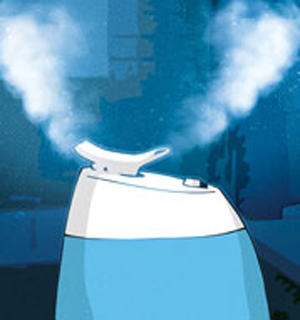By continuing your visit to this site, you accept the use of cookies.
Learn + I agreeLegionella pneumophila

Legionella pneumophila is a facultative intracellular1 bacterium.
It was discovered during a deadly outbreak in a hotel in Philadelphia (USA) in 1976 during a veteran reunion. The microbes had developed in the hotel’s air conditioning system.
The bacterium is called Legionella as a reference to these soldiers (legion).
Careful with the aerosols
Legionella is transmitted to the respiratory tract through aerosols2 produced by humidifiers, sprayers or air conditioning.


A great number of bacteria can be found in shower heads with stagnating water, especially on beaches at the start of summer.


A study performed by the University Hospital of Lausanne (CHUV) on shower heads and taps, concluded that the risk of finding Legionella bacteria was increased by 10 folds if amoebas3 were also present.
This means that the Legionella bacterium can “hide” in the amoeba where it can multiply. Hence, the amoebas found in the water are Legionella reservoirs. Legionella cannot be transmitted from a person to another requiring a common source during an outbreak.
A disease with variable severity
The disease caused by this bacterium is called Legionnaires’ disease or Pontiac fever and can go from a simple bronchitis with some cough to a severe pneumonia. Thankfully, in most cases the infection can be cured with antibiotics. In addition, this disease is quite rare, occurring about 400 times in Switzerland each year (source: OFSP 2017).
Intracellular1= Defines a bacterium that needs to be inside a cell to survive and multiply. Some bacteria are strictly intracellular, since they cannot multiply outside of a cell. Then there are facultative intracellular bacteria that can replicate even without a host cell. The strictly intracellular bacteria are difficult to grow in the laboratory and thus often remain undetected with cultivation methods routinely used for diagnostic purposes.
Aerosols2= Water droplets that can be transported by wind and air and enter our respiratory tracts.
Amoeba3= Small living single cell organism, which is capable of moving. It is naturally found in our environment, especially in water and humid zones. Some bacteria and viruses can multiply in amoebas, making them reservoirs for these microbes.
Antibiotic4 = A drug which allows to kill bacteria or at least to stop their growth. Antibiotics act against bacteria, but do not help treat diseases caused by viruses and parasites
